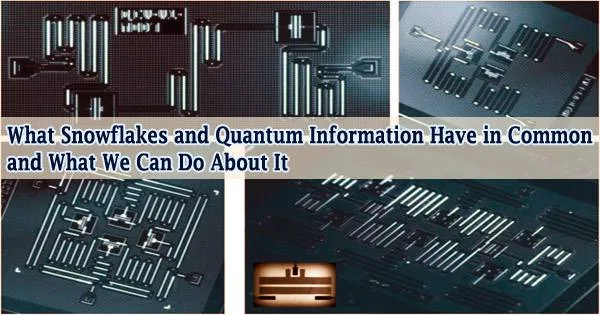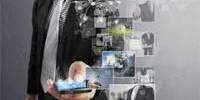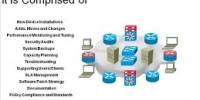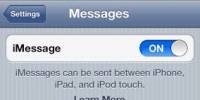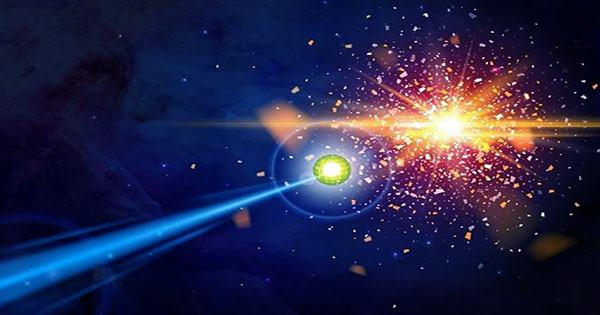Qubits are a fundamental component of quantum computers, but they are also infamously delicate and challenging to view without losing their data.
The National Institute of Standards and Technology (NIST) and the University of Colorado Boulder have recently published new research that may mark a significant advancement in the safe management of qubits.
In the work, a group of physicists showed that it was possible to read out signals from a specific kind of qubit called a superconducting qubit using laser light without also damaging the qubit.
The team’s findings could represent a significant step toward creating a quantum internet, according to the researchers. A network like this would connect dozens or perhaps hundreds of quantum devices, enabling engineers to tackle issues that are beyond the capabilities of even the most advanced supercomputers currently in use.
Theoretically, they could send unbreakable codes over great distances using a similar set of technologies. JILA, a collaborative research center between CU Boulder and NIST, was in charge of the work, which will be published in the journal Nature on June 15, 2022.
“Currently, there’s no way to send quantum signals between distant superconducting processors like we send signals between two classical computers,” said Robert Delaney, lead author of the study and a former graduate student at JILA.
According to Delaney, the standard bits in your laptop are quite constrained because they can only take on the values of zero or one, which are the numbers used in the majority of computer programming to date. Qubits, in contrast, have the ability to exist as both zeros and ones simultaneously because to a characteristic known as “superposition.”
Qubit labor is similar to attempting to capture a snowflake in your warm hand, though. That superposition can be collapsed by the smallest disturbance, making them appear to be regular bits.
Researchers have done experiments to extract optical light from a qubit, but not disrupting the qubit in the process is a challenge.
Cindy Regal
In the recent work, Delaney and his associates demonstrated how to circumvent that frailty. The team converts the signal emanating from a superconducting qubit into visible light using a wafer-thin piece of silicon and nitrogen, the same kind of light that now transports digital messages across fiberoptic cables from one city to the next.
“Researchers have done experiments to extract optical light from a qubit, but not disrupting the qubit in the process is a challenge,” said study co-author Cindy Regal, JILA fellow and associate professor of physics at CU Boulder.
Quantum leap
“There are a lot of different ways to make a qubit,” she added.
Qubits have been put together by some scientists by enclosing one atom with laser light. Others have tried incorporating qubits into crystals like diamonds. Utilizing superconducting qubits, businesses like IBM and Google have started creating quantum computer processors.
Electrons can move quickly through superconductors because of their lack of resistance. Superconductors can emit quantum messages in the form of microscopic light particles called “photons” that fluctuate at microwave frequencies when the appropriate conditions are met.
“And that’s where the problem starts,” Delaney said.
Researchers would first need to transform microwave photons into optical photons, which can travel rather safely over networks of fiberoptic cables across towns or even between cities, in order to convey those kinds of quantum messages over large distances. However, according to study co-author Konrad Lehnert, making that change using quantum computers is challenging.
That’s partly because laser light, one of the key tools required to convert microwave photons into optical photons, is the enemy of superconducting qubits. Your qubit will entirely wipe if even one errant photon from a laser beam hits it.
“The fragility of qubits and the essential incompatibility between superconductors and laser light makes usually prevents this kind of readout,” said Lehnert, a NIST and JILA fellow.
Secret codes
The scientists used an electro-optic transducer, a thin piece of material, as a workaround to get over that barrier. Delaney clarified that the team starts by zapping the wafer with laser light, which is too small to view without a microscope.
The device shakes and shoots out extra microwave photons when a qubit bumps against it, but these photons now oscillate at a whole other frequency. Visible light emerges from the microwave source.
In the most recent investigation, the researchers used an actual superconducting qubit to test their transducer. They discovered that the tiny material could pull off this switcheroo while also successfully isolating those deadly adversaries, qubits and lasers. In other words, none of the laser light’s photons re-emitted and interfered with the superconductor.
“Our electro-optic transducer does not have much effect on the qubit,” Delaney said.
The team is still working toward being able to use its tranducer to communicate true quantum information. The gadget isn’t especially effective yet, among other things. A single visible light photon typically results from 500 microwave photons.
To raise that rate, the researchers are now working. When they do, potential new developments in the quantum world might happen.
Theoretically, scientists might use a similar set of technologies to transmit quantum signals via cables that would instantly obliterate their data if anyone tried to listen in. In other words, Mission Impossible became a reality solely because of the sensitive qubit.
